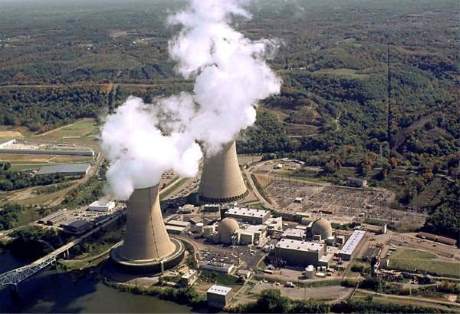A study by US regional transmission organisation (RTO) PJM Interconnection on the effects of the proposed closure of four nuclear units on grid reliability ignores the units' contribution to fuel diversity and zero-carbon emissions, FirstEnergy Solutions (FES) said on 30 April.
 |
| Beaver Valley (Image: FirstEnergy/NRC) |
FES has said it will deactivate the Beaver Valley, Davis-Besse and Perry units in Ohio and Pennsylvania unless legislative policy solutions can be found to keep the plants operating. Davis-Besse and Perry, which are in Ohio, are to close by 31 May 2020 and 31 May 2021 respectively, while in Pennsylvania Beaver Valley unit 1 is to close by 31 May 2021 and unit 2 by 31 October 2021.
PJM has publicly stated that deactivation of the units is not expected to adversely impact the reliability of its transmission system. However, in a 30 April letter to US Energy Secretary Rick Perry, the RTO said this would require "a combination of remedial measures" to the transmission system to ensure that transmission lines and transformers will not be overloaded on withdrawal of the units.
FES president and chief nuclear officer Don Moul said PJM's reliability finding was not a surprise, but it was a disappointment. "The results of the PJM reliability study highlight that their review ignores the value that these units offer the grid in terms of fuel diversity and zero-carbon emissions generation," he said. "The 4048 megawatts of capacity that these plants provide amounts to 14% of Ohio's overall generation capacity and 7% of Pennsylvania's overall generation capacity. That gap will have to be filled overwhelmingly by carbon-fuelled generation," he added.
The costs of upgrades to the system to allow it to cope with the loss of the nuclear units would be passed on to consumers in the form of higher electricity bills, he said, noting that PJM "did not provide a dollar estimate" for remediation costs.
"We again call on legislative and regulatory officials to work with us on policy solutions to enable our plants to continue to play their critical role in the reliability, fuel-diversity and resilience of our regional grid. When calculating the cost of operating relief for our units, we ask policy makers to do all the math: Factor in the value of zero-carbon emissions for so great a portion of Ohio and Pennsylvania's generation needs, factor in the contributions that our facilities and their employees make to local and regional economies, and factor in the cost of the PJM upgrades that consumers must bear if our capacity is retired," he said.
"In mid-2019, we will begin facing decisions on each of these plants as to whether to refuel them or shut them down. Without operating relief, they will be permanently lost."
A recent study by the Brattle Group estimated that closure of the plants will raise gross electricity costs for customers by around USD400 million for Ohio, USD285 million for Pennsylvania, and USD1.5 billion across all of PJM, while leading to increased emissions of carbon dioxide and air pollutants.
PJM on 30 April announced the next steps in its initiative to ensure future fuel security for electricity generation on its power system, which it says is at the forefront of resilience. PJM CEO and President Andy Ott said the timing of the three-phase study, which will take six months to complete, "is not tied to any one event."
"The PJM grid remains reliable even with the resource retirements analysed to date and investment in new, increasingly more efficient gas-powered generation sources," the RTO said.
FES is the competitive subsidiary of FirstEnergy Corporation, which in November 2016 announced its intention to withdraw from the competitive electricity market. FES, together with FirstEnergy Nuclear Operating Company, voluntarily filed on 31 March for Chapter 11 bankruptcy protection with US courts to facilitate a financial restructuring.
Researched and written
by World Nuclear News




_47120.jpg)

_23621.jpg)






